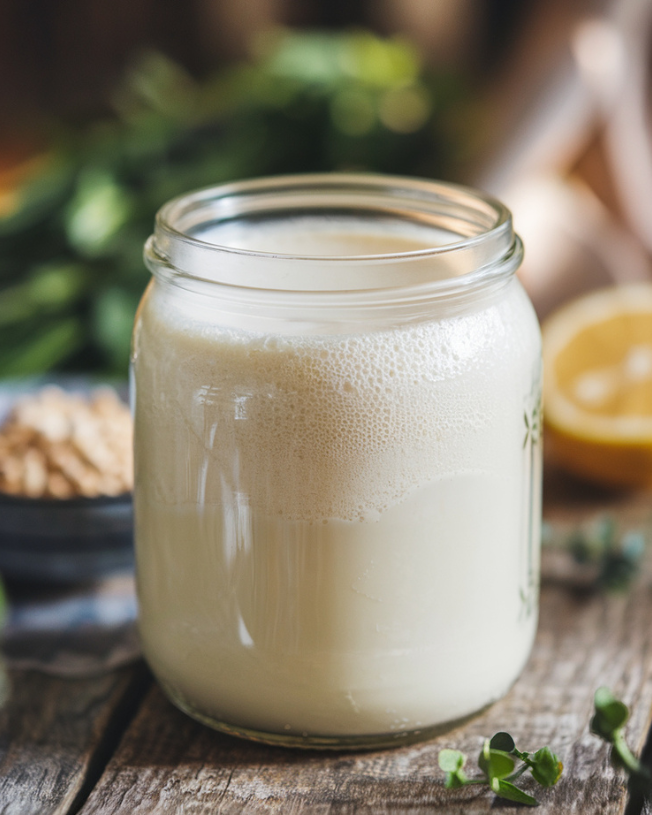In Indian cuisine, yogurt plays a central role in providing refreshing flavors and digestive benefits. Two popular yogurt-based creations, salted lassi and raita, are often enjoyed as cooling sides or beverages with various dishes. While these dishes may seem similar, they each bring unique textures, flavors, and benefits.
This article’ll explore the differences between salted lassi and raita, their traditional uses, health benefits, and tips for making each one at home. By the end, you’ll understand when to choose salted lassi vs. raita, and how each can enhance your meals.
What is Salted Lassi?
Salted lassi is a savory, refreshing yogurt-based drink made with yogurt, water, salt, and spices like roasted cumin. Unlike its sweet version, which includes sugar or fruits, salted lassi is light and savory with a subtle tanginess. It’s often served chilled, especially in hot weather, as a refreshing drink to accompany spicy meals. This popular beverage not only cools the body but also aids digestion and replenishes electrolytes.
Health Benefits of Salted Lassi
Salted lassi is more than just a refreshing drink; it’s packed with health benefits:
- Probiotic Power: The yogurt in salted lassi is full of probiotics, beneficial bacteria that promote gut health and improve digestion.
- Cooling Effect: Salted lassi hydrates and cools the body, providing relief after spicy meals.
- Electrolyte Balance: The added salt in salted lassi helps to replenish electrolytes, making it ideal for hydration.
- Low in Sugar: Since it’s a savory drink, salted lassi has no added sugar, which makes it a great option for those watching their sugar intake.
How to Make Salted Lassi
Making salted lassi at home is simple. Here’s a quick recipe for a delicious salted lassi:
Ingredients:
- 1 cup plain yogurt
- 1/2 cup cold water
- 1/4 tsp salt (adjust to taste)
- 1/4 tsp roasted cumin powder (optional)
- Fresh mint leaves (for garnish)
Instructions:
- Blend Ingredients: Add the yogurt, water, salt, and cumin powder to a blender. Blend until smooth.
- Adjust Seasoning: Taste and adjust the salt as needed.
- Serve: Pour into a glass, garnish with fresh mint, and enjoy.
Salted lassi is best served cold. You can add ice cubes for an extra chill on hot days.

What is Raita?
Raita is a yogurt-based side dish or condiment that typically accompanies Indian meals. Unlike salted lassi, which is a drink, raita is thicker and often includes fresh vegetables or fruits. Common ingredients in raita include cucumber, tomato, onion, carrot, and herbs, which add texture and flavor. Spices like cumin, coriander, and chili powder are often added for extra taste. Raita is served chilled and acts as a cooling balance to spicy dishes, enhancing the overall meal.
Health Benefits of Raita
Raita, like salted lassi, offers several health benefits:
- Nutrient-Rich: Raita combines yogurt with vegetables or fruits, adding essential vitamins, minerals, and fiber.
- Supports Digestion: Yogurt’s probiotics aid digestion, while ingredients like cucumber and mint help cool and soothe the digestive system.
- Low-Calorie Option: Raita is low in calories but rich in nutrients, making it a healthy, flavorful addition to meals.
- Versatile Nutrient Source: The variety of ingredients in raita means it can offer a range of nutrients, depending on what you add.
How to Make Basic Cucumber Raita
One of the most popular types of raita is cucumber raita. Here’s a simple recipe to try:
Ingredients:
- 1 cup plain yogurt
- 1/2 cucumber, grated or finely chopped
- 1/4 tsp salt (adjust to taste)
- 1/4 tsp roasted cumin powder
- Fresh coriander leaves (for garnish)
Instructions:
- Combine Ingredients: In a mixing bowl, stir together the yogurt, grated cucumber, salt, and cumin powder.
- Garnish: Add fresh coriander leaves and a sprinkle of cumin powder for garnish.
- Serve: Serve the raita cold as a side dish with your meal.
Cucumber raita pairs well with spicy curries, biryanis, and grilled dishes, adding a refreshing element to your plate.

Key Differences Between Salted Lassi and Raita
Salted lassi and raita may both be yogurt-based, but they have clear differences in consistency, purpose, ingredients, and uses in meals.
- Consistency: Salted lassi is a thin, drinkable beverage, while raita is thick and spoonable, served as a side dish.
- Use in Meals: People enjoy salted lassi as a refreshing drink before or during a meal. In contrast, raita accompanies the main dish as a cooling side.
- Ingredients: Salted lassi usually contains yogurt, water, salt, and sometimes cumin. Raita includes yogurt mixed with vegetables, fruits, herbs, and spices.
- Purpose: Salted lassi serves primarily as a cooling drink, while raita balances spicy flavors and adds texture to a meal.
- Serving Style: Salted lassi is served in a glass, while raita is served in a bowl as part of the main meal.
Variations and Popular Recipes for Salted Lassi and Raita
Both salted lassi and raita can be customized with various ingredients to create unique flavors. Here are a few popular variations:
Salted Lassi Variations
- Masala Lassi: Add spices like black salt, chaat masala, and black pepper to your salted lassi for an extra punch of flavor.
- Mint and Cucumber Lassi: Blend in cucumber slices and fresh mint leaves for a refreshing twist on salted lassi.
- Ginger Lassi: Add a touch of grated ginger to salted lassi for a spicy, digestion-friendly version.
Raita Variations
- Boondi Raita: Add boondi (small, crispy chickpea flour balls) to yogurt along with spices for a unique texture and taste.
- Tomato and Onion Raita: Combine diced tomatoes and onions with fresh coriander and spices to create a flavorful raita that pairs well with spicy dishes.
- Mint Raita: Blend fresh mint leaves with yogurt for an herb-infused raita with a vibrant, refreshing taste.
When to Choose Salted Lassi vs. Raita
Each of these yogurt-based options serves a different purpose in meals. Here’s a guide on when to choose salted lassi or raita:
For Hydration: Salted lassi works best as a refreshing drink for hydration and electrolyte balance. Its thin consistency makes it easy to sip alongside or before a meal.
To Complement Spicy Foods: Raita’s thicker texture and cooling ingredients make it ideal for balancing the heat of spicy dishes. It helps calm the palate and adds a creamy texture.
For Digestive Benefits: Both options support digestion due to yogurt’s probiotics, but salted lassi is often easier on the stomach since it’s lighter. Raita can provide additional digestive benefits with ingredients like cucumber or mint.
As a Versatile Meal Addition: Raita is an excellent choice as a side dish for a variety of Indian dishes, while salted lassi is usually enjoyed as a refreshing standalone drink.
Frequently Asked Questions About
.
Can You Substitute Salted Lassi for Raita?
Salted lassi and raita have different textures and uses, so they’re not typically interchangeable. However, if you lack raita, salted lassi can be a refreshing addition to the meal, though it won’t offer the same flavor balance or texture as raita.
Can Raita Be Made in Advance?
Yes, you can prepare raita ahead of time and store it in the refrigerator for a few hours. However, if using ingredients like cucumber or onion, it’s best to add them just before serving to keep them fresh.
Is Salted Lassi or Raita Better for Digestion?
Both options aid digestion due to yogurt’s probiotics. Salted lassi is lighter, which may make it easier to digest, while raita offers added digestive benefits when it includes ingredients like cucumber or mint.
Final Thoughts on
Salted lassi and raita each bring unique flavors, textures, and benefits to a meal. Salted lassi is ideal for hydration and refreshment, while raita complements the main course by balancing spicy flavors and adding texture. Whether you prefer the lightness of salted lassi or the hearty texture of raita, both are excellent ways to incorporate yogurt into your meals.
Next time you prepare a spicy curry or a flavorful biryani, consider adding salted lassi or raita for a balanced










